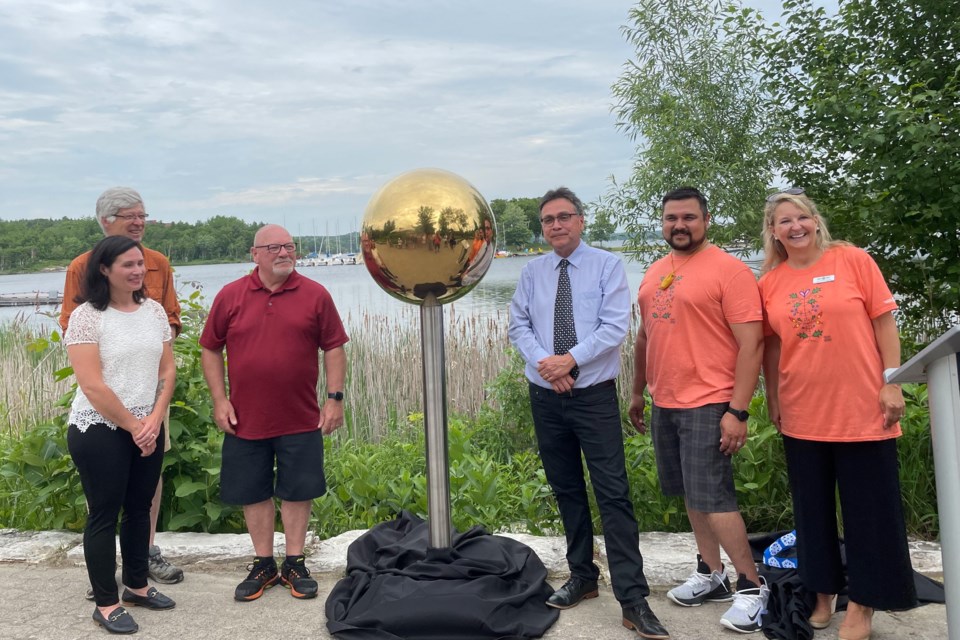The shores of Ramsey Lake — or Bitimagamasing in Anishinaabemowin — are now home to the Sudbury Solar System Path.The Science North project launched June 21 is a scale model of the solar system that stretches almost two kilometres.
It features traditional Anishnaabe and Western knowledge in three different languages (English, French and Anishnaabe).
“It was really important that we started this project in the right way,” said Julie Moskalyk, Science Director of Science North told Sudbury.com in an interview.
“We wanted to share with our community, especially on national Indigenous peoples day, the good intent to do this project in the right way.”
“So right from the very, very beginning, we worked very closely with our Indigenous advisors. And today's a ‘groundbreaking’, not an unveiling of an installed exhibit.
“We wanted to share with our community, especially on national Indigenous peoples day, the good intent to do this project in the right way.”
In creating the solar path, Science North worked closely with Dominic Beaudry, member of the Science North Northeast Indigenous Advisory Committee and Anishinaabe educator from Sudbury and Manitoulin region, and Will Morin, a local Ojibwe educator, storyteller, and artist.They provided education and knowledge of Anishnaabe culture and language to incorporate into this project.
This is because Science North wanted to honour traditional Anishnaabe knowledge, celebrate the Anishinaabemowin language, and promote an understanding of the cultural history of this land.
“I think when we take on major projects in our communities, educational projects, like Science North does, it's really important to be inclusive of the local, First Nations people that live in the region,” Beaudry told Sudbury.com. “Because when they come to visit this sensory Solar System pathway, they're going to see their language on the science, they're going to see the culture on the science. So it brings that important feeling of equity.”
June 21 marked the grand opening of the path and the installation of the first element of our solar system (the Sun!).
All nine planets will eventually be installed, educating people on the solar universe as well as respecting different cultures that are important to Sudbury.
“We wanted to generally increase public awareness and public knowledge about our solar system, about astronomical sciences and really about the true scale of where we live and where we can live,” Norman Hey, secretary of the Sudbury Centre of the Royal Astronomical Society of Canada told Sudbury.com.
“Personally, my feeling is that this will help people to realize that planet Earth is the only place that humanity can live and can survive. We can't live on any of the other planets that you're going to see as you walk by. So we have to take care of this one.”
